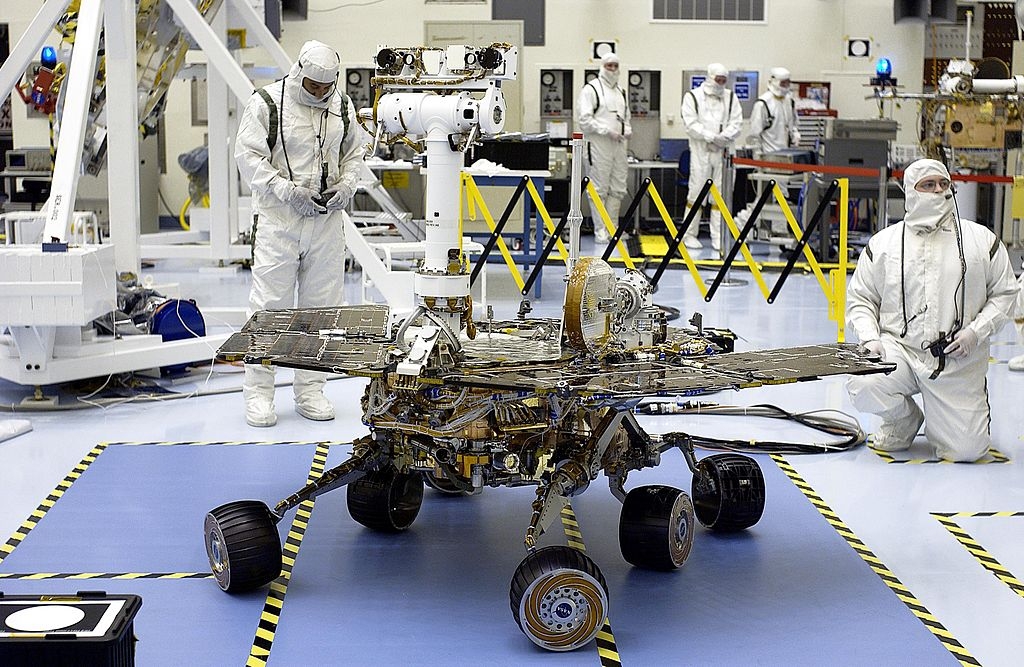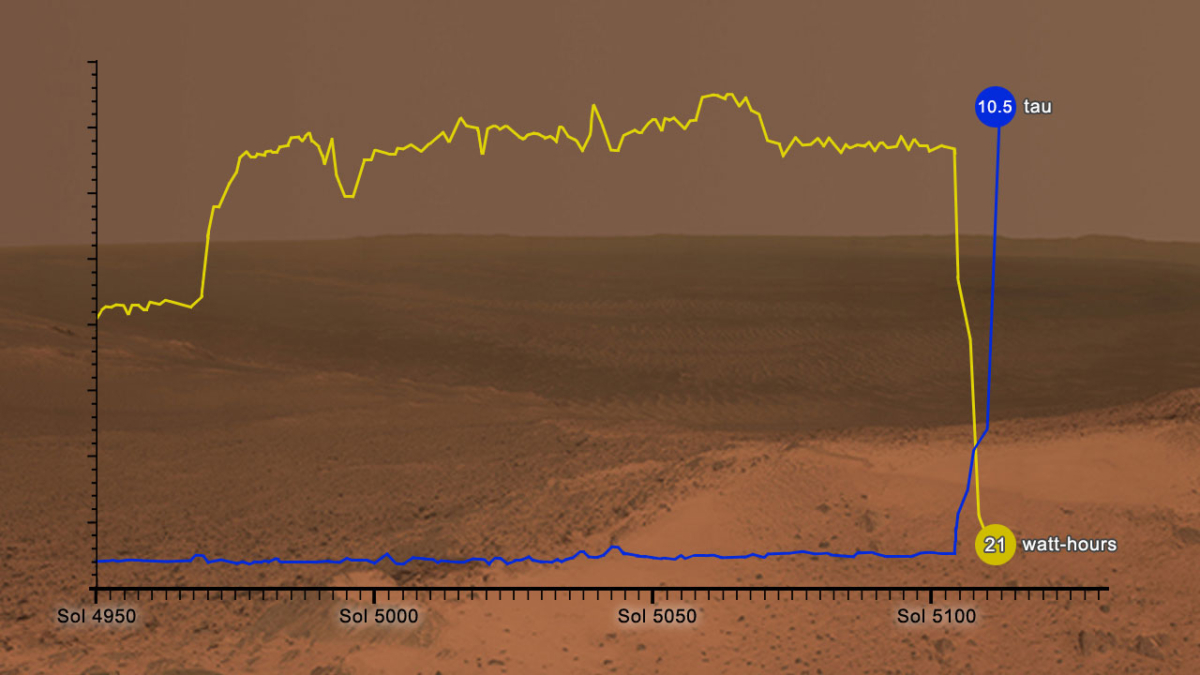
Opportunity Mars Rover Still Silent Beneath Raging Dust Storm

NASA's Opportunity Mars rover remains silent as a giant dust storm continues to swirl on the Red Planet.
The storm began on May 30 and grew to encircle the entire planet a few weeks later. With so much dust in the air, the solar-powered Opportunity hasn't been able to recharge its batteries and has entered a sort of hibernation.
"We have not heard from the rover for a couple of weeks," said Ray Arvidson of Washington University in Saint Louis. Arvidson is deputy principal investigator for the Mars Exploration Rover mission, which originally consisted of Opportunity and its twin, Spirit. The duo touched down in different locations on Mars a few weeks apart in January 2004.
Opportunity kept right on rolling, long after Spirit's death. But the dust storm has sidelined the golf-cart-size rover: Opportunity hasn't sent a photo back to Earth since June 10, NASA officials have said. Spirit has long been silent, becoming bogged down in sand in late 2009. Its last communication with Earth was sent on March 22, 2010.
Opportunity is now likely in a low-power mode, "in which the rover wakes up, checks its power and, if too low, just goes back to sleep again," Arvidson told Inside Outer Space.

"At some point as the storm subsides, Opportunity should wake up, decide it has enough power to transmit a signal from its low-gain antenna, saying, 'I am awake and OK, but I am going back to sleep again,'" he added. "This should happen every sol until it decides to go back to full operation."
Get the Space.com Newsletter
Breaking space news, the latest updates on rocket launches, skywatching events and more!
(A sol is a Martian day, which is about 40 minutes longer than an Earth day.)
"We have been listening, but no low-gain antenna communications yet. And the storm continues in full force," Arvidson said.
"The storm has gone global and is still raging," said Jim Rice, geology team leader for the Mars Exploration Rover Project at Arizona State University's Mars Space Flight Facility.
But, he added, "I'm still confident we make it through this."
Leonard David is author of "Mars: Our Future on the Red Planet," published by National Geographic. The book is a companion to the National Geographic Channel series "Mars." A longtime writer for Space.com, David has been reporting on the space industry for more than five decades. Follow us @Spacedotcom, Facebook or Google+. This version of the story published on Space.com.
Join our Space Forums to keep talking space on the latest missions, night sky and more! And if you have a news tip, correction or comment, let us know at: community@space.com.

Leonard David is an award-winning space journalist who has been reporting on space activities for more than 50 years. Currently writing as Space.com's Space Insider Columnist among his other projects, Leonard has authored numerous books on space exploration, Mars missions and more, with his latest being "Moon Rush: The New Space Race" published in 2019 by National Geographic. He also wrote "Mars: Our Future on the Red Planet" released in 2016 by National Geographic. Leonard has served as a correspondent for SpaceNews, Scientific American and Aerospace America for the AIAA. He has received many awards, including the first Ordway Award for Sustained Excellence in Spaceflight History in 2015 at the AAS Wernher von Braun Memorial Symposium. You can find out Leonard's latest project at his website and on Twitter.









